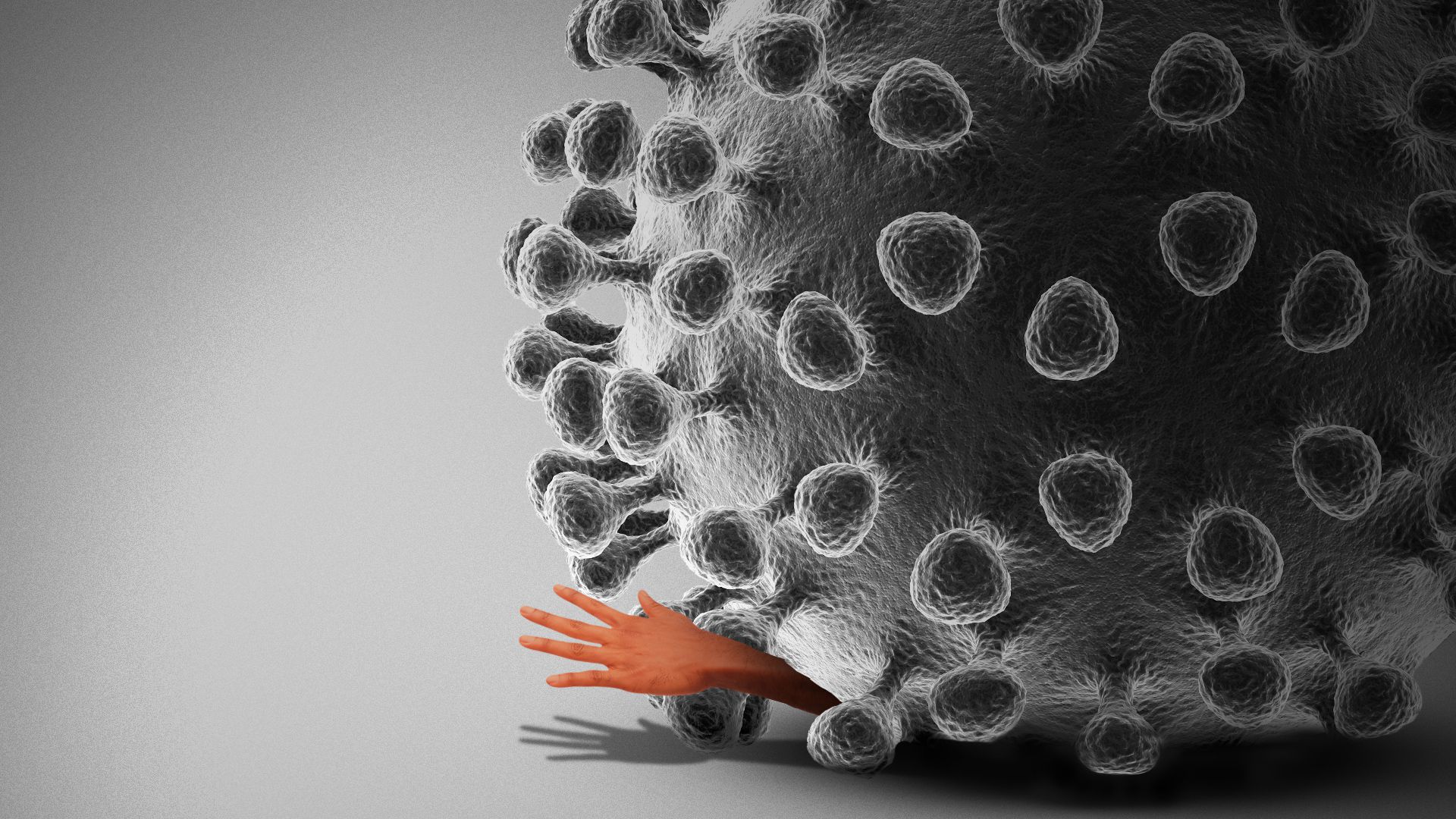19 August 2020 (Serifos, Greece) – As a writer and journalist, I love examining new spaces. Back in February (which seems a lifetime ago), when I plunged into learning and writing about COVID-19 and all of the coronavirus-related issues, it awakened in me a saturating, desperate feeling to command that new space. But despite having a science background (a secondary University degree in physics and a life-long reading commitment to science in general), finding coherence in the firehouse of coronavirus information was difficult, and disorientation was the norm.
But the way out … as always … was to take sufficient time for in-depth reading, listening to experts, to looking and thinking … until the context, the history and the structure (finally) gave shape to the narrative, flickering up from those waves of anecdotes and facts. I have produced, to date, 60+ COVID-19 pieces which you can access here. It has been invigorating. It is how I approach all of my writing. Deep reading. Context. Thinking.
Over the course of the last two weeks, I have received COVID-19 vaccine/immunity/progress updates from Cellular Genomics, Genetic Engineering, the Johns Hopkins Coronavirus Resource Center, and the Oxford University Vaccine Group. For those working round the clock on increasing testing capacity and those working on a vaccine, these are thoroughly exhausting time. I have spoken to scientists who tell me they are running on adrenaline and four hours’ sleep. And those whom have told me “I am too tired to find a cliché to describe my work routine.”
And the dilemma for all governments at the beginning of all this, as presented to me by so many epidemiologists, was whether to go for measures that might truly suppress the virus – at huge cost to the economy and to healthcare, with the very real risk of an even worse second and possible third wave of the disease later – or to accept that many deaths would occur no matter what you did:
Your epidemiological duty is to minimise the expected number of life-years lost, which may mean accepting terrible suffering now to alleviate even worse suffering later. When you look at the numbers for Covid-19, the “trolley problem” becomes appalling, with hundreds of thousands of lives lost either way.
Like everyone else, we crave good news. Scan social media and there are plenty of Panglosses happy to supply the fix, usually in the form of something recently misunderstood by them, but well understood by virologists for decades. Most tell me it is going to be tough and ignore all of the “It’s all OK, nothing to worry about, we are now safe, the first wave will be the last” stuff .
So I’ve read all of the aforementioned reports and herein provide a mash-up of the most significant points:
1. There are genuine grounds for hope. We know many if not all of the virus’s weaknesses, and there are lots of promising drugs that might prevent its replication. We are beginning to understand the immune response to the virus, and its complex relationship with the common cold coronaviruses. We have got better at supportive care: ventilation and anticoagulation. We also have two useful drugs. Remdesivir is an antiviral that clogs up the virus’s replication machinery. Trials have demonstrated a marginal effect. It’s complicated to manufacture (never mind the patent lawyers) and must be given intravenously. It would probably be most effective if given early in the course of infection, before you knew whether the patient was going to be mildly or severely affected.
As I noted in a previous post, the virus has many components. Its main entry weapon is known as Spike. This is a large, sugar-coated protein complex that can rip a hole in the membrane of a cell to allow the virus to enter. Block Spike, and you keep the virus out. It’s easy enough to measure antibodies to Spike, but not all of them actually prevent the virus from entering cells. To find out whether the antibodies are doing their job effectively, you have to culture the virus in a high-containment facility, titrate tiny amounts of serum extracted from the test subject’s blood into the virus culture, and demonstrate that the serum blocks the virus. It’s painfully slow.
Ok, we’ve had a promising start, but hardly transformative. It’s probable that later in the disease, especially for the most severely affected patients, a maladaptive immune response is mostly to blame. For this, a laser-guided sniper rifle approach, precisely targeting an important mediator of inflammation called interleukin 6, has so far proved ineffective.
In contrast, an ancient blunderbuss of a steroid called dexamethasone, invented in the 1950s, has proven blessedly effective, especially for very severely ill patients requiring mechanical ventilation.
2. A substantially reduced chance of death for patients in intensive care is good news of a sort, but isn’t going to make the world normal again. You will still avoid hugging and kissing your nearest and dearest outside your bubble if you have any sense. A good vaccine is needed. Here we have the best news of all. In the few months since we first learned of the virus, several strong vaccine candidates have made it to final stage clinical trials. The Trump administration has come up with a name (natch) for the collective effort of thousands of dedicated scientists and medics to produce a vaccine faster than any other in history: Operation Warp Speed. The most obvious goal is to elicit a decent antibody response against Sars-CoV-2’s vicious entry weapon, Spike (see my explanation of Spike above). The leading vaccine candidates are of three kinds: (a) kill-the-virus; (b) a hybrid, with Spike protein bolted on to a completely different kind of live virus; and (c) the RNA message that gives instructions to your body’s own cells to make Spike protein.
3. The Oxford University report goes into the greatest details on this so let me quote the most important chunk:
“To make good, sustained antibody responses to a target like Spike, you have to introduce the protein in such a way that the immune system recognises it not only as something new, but also as something dangerous. Mounting an aggressive immune response to something novel yet innocuous – pollen, peanuts or penicillin, say – isn’t generally useful, and is often harmful. The immune system therefore has multiple ways of recognising a pathogen, and mounting an appropriate response to it. The kind of response you want to a virus is different from the sort that would be most effective against a bacterium, and very different from what you’d need to rid yourself of worms. Each of the three kinds of vaccine candidate seems to produce the right kind of response.”
4. The kill-the-virus approach has the virtue of simplicity. You grow a large stock of the virus – easier said than done, but a particular kind of cell called Vero E6 obligingly replicates the virus to quite high titers – kill it, and jab it in the arms of public-spirited volunteers (or recruits in the Chinese army).
A titer is a ratio used to explain the amount of something in a solution. When talking about vaccines or immunity to disease, titers identify the amount of antibodies in a person’s blood. Antibodies are proteins that can be found circulating through your body. It is their job to find and remove potential pathogens like viruses and bacteria.
Jonas Salk used the same approach to produce the first successful polio vaccine. He started his work in 1948, the vaccine was tried in animals in 1952, and it was proven to be successful in humans in 1955. Salk’s successors at Mount Sinai Hospital in New York are among the leaders in tackling the present coronavirus crisis; notably, they’ve been very good at demonstrating simple things extremely well. The virus is perceived as dangerous by the immune system because it is a virus, with all the viral bits and pieces that the immune system normally recognises.
Our understanding of biology has changed spectacularly since Salk began his research – Watson and Crick published the structure of DNA in 1953 – but designing successful vaccines sometimes isn’t technologically complex.
5. The hybrid virus approach owes more to Watson and Crick, relying on molecular biology (DNA makes RNA which in turn makes protein) to adapt a completely different sort of virus to express Spike. The vaccine developed by scientists at Oxford in partnership with AstraZeneca is the most advanced candidate of this kind. Sars-CoV-2 is an RNA virus, making protein directly from the viral genome; the vaccine is an adapted DNA virus, instructing the production of RNA and then protein in the conventional way. The Oxford/AstraZeneca vaccine rejoices in the name ChAdOx1 nCoV-19: ‘Ox’ for Oxford; ‘Ad’ because it’s an adapted adenovirus, another common cause of the common cold; ‘Ch’ because it’s based on a chimpanzee virus, to avoid stimulating a pre-existing response to the common human adenoviruses; and nCoV-19 (novel Coronavirus 2019) because that is what we called Sars-CoV-2 in January, before it got its official name in February. The recombinant virus produces the notorious Spike, and the immune system recognises it as dangerous because it’s encoded by a virus.
6. The hybrid is constructed in such a way that it can get into human cells and start making proteins, but cannot produce viable infectious virus. In principle, therefore, it should be pretty safe, and so it seems to be. Genetic Engineering details the initial findings from ongoing trials of more than a thousand volunteers (half given the new vaccine, half given a meningitis vaccine to act as the control group) didn’t show any serious adverse effects attributable to ChAdOx1 nCoV-19. Just about everyone who was vaccinated developed good titres of neutralising antibodies to Spike. There was also a decent response from a different kind of immunity mediated by T cells. It’s very difficult to believe that such a vaccine would have no useful effect. It didn’t prevent replication of the virus in the upper airways, so if humans respond to the vaccine in the same way as the monkeys, we would expect vaccinated individuals to be protected from severe disease, but still be able to pass the virus on.
7. One point all these studies emphasize: it’s foolish to extrapolate directly from animal models, however, and that’s the reason large-scale human trials are underway. In both of the coronavirus series in The Guardian and The New York Times, the point is made that the currently low levels of community transmission in the UK might not provide sufficiently swift evidence of the vaccine’s efficacy, and even suggestions that exceedingly brave volunteers – young, fit, healthy, slim – might agree to be given a dose of SARS-CoV-2 to test the vaccine’s efficacy directly. That seems unnecessary when there’s still plenty of transmission in many other parts of the world where the vaccine is being tested, and when it’s likely (although not inevitable) that there will be second and subsequent waves in the UK.
8. It’s unlikely but not impossible that a small minority of people might develop the wrong kind of response to the vaccine, and end up being more susceptible to the virus. In the studies so far that’s not been seen, and it’s being looked for very carefully. The main caveats to the so far excellent news from this vaccine are that it wasn’t completely protective in the macaque model; we don’t know how long protective immunity might last; and the correlates of immunity (such as the development of neutralising antibody titres) have so far been shown only in a relatively young and healthy population. Clearly, it’s most important to protect the elderly and those with chronic health conditions that make them especially vulnerable.
9. The Johns Hopkins report notes another type of vaccine exemplified by one produced by Moderna, a biotech company based in Massachusetts, funded by the US government. Instead of using a virus, they take the messenger RNA that instructs cells to make Spike, and coat it with an oily chemical that helps it slip into cells. In many ways it resembles an artificial virus, and the immune system recognises it as such. The advantage of these kinds of vaccine is that they’re comparatively easy to make in large amounts, good for ‘Warp Speed’ delivery. Moderna reported their results in macaques at the end of July. The monkeys were protected from severe disease, and the vaccine also seemed to prevent replication of the virus in the upper airways. Good titres of neutralising antibodies were demonstrated. A trial in (eventually) tens of thousands of people is underway, and the otherwise abject failure to suppress transmission by social distancing in many parts of the US augurs well for determining its efficacy.
Will this all be over by Christmas? No. ‘Warp Speed’ means early next year, if we are lucky. By then, there is a reasonable chance that all three types of vaccine will have been shown to be efficacious, and hundreds of millions of doses will have been manufactured. That’s not the same as their having been administered to all the right people. The chance of partial success – a good level of temporary protection – is higher than the chance of full success. It may well be that two doses of the vaccine are required for better protection, or that we will eventually prefer one of the hundreds of vaccines currently in earlier stages of development. I would be extremely surprised if we never develop an effective vaccine. A bigger concern is to get enough people to take it up.


